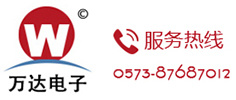News Center
19
2022
-
08
Basic knowledge of inductors
Author:
Zidian Electric
Inductors are commonly referred to as inductors and are one of the most commonly used basic electronic components.
There are many types of inductors and different shapes. The more common ones are: single-layer flat-wound air-core inductor coil, space-wound air-core inductor coil, unwrapped air-core coil, multi-layer air-core inductor coil, honeycomb-type inductor coil, with magnetic core Inductance coil, magnetic tank inductance coil, high frequency choke coil, low frequency choke coil, fixed inductor, etc.
The main uses of inductors in circuits: one is used for circuit tuning, such as tuning coils in radios and resonant coils of intermediate frequency transformers, etc.; the other is used in oscillating circuits, such as oscillating coils in radios, and various LC oscillations The inductance coil in the circuit; the third is used for blocking filtering, such as the LC filter inductor used for power supply filtering; the fourth is the resonant inductor used for frequency selection in band-pass and band-rejection filters.
The inductance coil is wound on an insulating tube with wires one by one, and the wires are insulated from each other, and the insulating tube can be hollow or contain an iron core or a magnetic powder core.
As a kind of inductance components, the inductance coil has a wide range of applications. Most of the inductance coils are non-standard components and can be wound by yourself. So how should the inductance coil be wound, and what are the winding methods of the inductance coil? The total winding method of the coil includes a single-layer winding method and a multi-layer winding method, which are respectively suitable for the winding of different inductances. Among them, the single-layer winding method and the multi-layer winding method have different winding methods. You introduce specific details.
The winding method of the enameled wire of the inductor coil on the skeleton can be divided into two types: single-layer winding method and multi-layer winding method.
The first winding method: single-layer winding method
The single-layer inductance coil is one of the most widely used in today's circuit applications, and its inductance is generally only a few or dozens of microhenries. The Q value of such coils is generally relatively high, and most of them are used in high-frequency circuits.
In the design of single-layer inductance coil, its line winding method usually adopts three methods: close winding method, intermediate winding method and free-form winding method. And these three winding methods are also suitable for different circuit appliances.
1. The dense winding method is actually to place the wires next to each other and densely wound them on the skeleton. This coil inductance is usually used in antennas, such as the antenna coils of radios and semiconductor tape recorders.
2. The winding method of the intermediate winding method is generally similar to that of the dense winding method, except that there are gaps between the coils, instead of being close to each other like the dense winding method. This inductance has small distributed capacitance and high high-frequency performance, and is very suitable for use as a short-wave antenna.
3. The coil of the free-wound method is actually a hollow coil, which can also be said to be a deformation of the close-wound method, that is, the skeleton of the close-wound method is pulled out, and the gap between each coil is appropriately adjusted according to the required indicators, or directly. Change the shape of the coil. It is generally used as a resonant circuit in high frequency circuits.
The second winding method: multi-layer winding method
Single-layer coils can only be used in applications with small inductance, so when the inductance is greater than 300μH, multi-layer coils should be used.
The multi-layer winding method can be divided into multi-layer dense and honeycomb winding methods: if the winding of the honeycomb-type inductance coil is wound, its plane is not parallel to the rotating surface, but intersects at a certain angle. It is called a honeycomb coil. The number of times the wire is bent back and forth during one rotation is often referred to as the number of inflection points. The advantages of the honeycomb winding method are small size, small distributed capacitance, and large inductance.
Inductors work using the principle of self-induction. The inductive coil will generate a self-induced electromotive force when passing current, and the magnitude of the self-induced electromotive force is proportional to the rate of change of the current passing through the inductive coil, and always opposes the change of the original current (Figure 6). Therefore, the inductor has the function of passing DC and blocking AC.
The quality of the inductor can be tested with a multimeter. Put the multimeter in the "R×1" block, and connect the two test leads (regardless of positive and negative) to the two pins of the inductor. The pointer indication should be close to "0Ω". resistance. If the needle does not move, it means that the inductor has an internal circuit breaker; if the needle indicates unstable, it means that the internal contact is poor.
Well, that's it for today's knowledge of inductors. If you have any suggestions, you can leave a message below for discussion, and Zidianjun will reply one by one.
Related News








